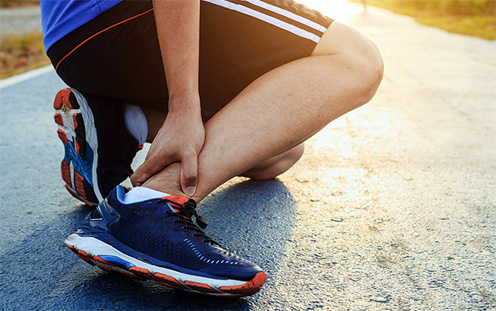Key pointers:
- The wrong footwear can cause or worsen foot and ankle pain.
- Supportive, well-fitted shoes reduce pressure and maintain balance.
- Heels, flats, and worn-out shoes can contribute to strain and deformity.
- Prevention begins with comfort, fit, and awareness of early symptoms.
Why Does Footwear Matter for Foot and Ankle Health?
Every step you take puts weight and pressure on your feet. Over time, unsupportive shoes can lead to strain on the muscles, ligaments, and joints of the foot and ankle. Wearing the right footwear isn’t just about comfort, it plays an important role in maintaining proper alignment and preventing common orthopaedic conditions such as plantar fasciitis, bunions, flat feet, and ankle instability.
What Type of Shoes Are Good for Daily Use?
1. Supportive Trainers or Walking Shoes
Choose shoes with good arch support, cushioning, and a slightly firm sole. These features help absorb shock, prevent heel pain, and reduce pressure on the ankle. Trainers are particularly suitable if you walk long distances or spend much of the day on your feet.
2. Low-Heeled Shoes
High heels shift your body weight forward and strain the front of the foot. Shoes with a small heel (about 2–4 cm) promote better balance and distribute weight more evenly.
3. Structured Flats
Not all flats are bad, those with cushioned insoles and supportive arches are comfortable for work and casual wear. Avoid paper-thin soles that offer no shock absorption.
4. Ankle Boots with Firm Support
Boots that hug the ankle securely and provide a stable base can help reduce the risk of twisting injuries.
5. Sandals with Contoured Footbeds
In hot weather, opt for sandals that provide arch support and heel cushioning. Simple flip-flops should be reserved for short, casual use only.
What Kind of Shoes Should I Avoid?
1. High Heels
Regular use of high heels can lead to bunions, hammertoes, and ankle instability. If you must wear them, keep the heel height moderate and limit how long you wear them.
2. Completely Flat Shoes
Very flat footwear, such as thin ballet flats or slip-ons, offers little support for the arch, which may cause heel pain or Achilles tendon strain.
3. Flip-Flops or Loose Sandals
Flat soles and minimal straps make the foot work harder to stay stable. Extended use can cause fatigue and increase the risk of tripping.
4. Narrow or Pointed-Toe Shoes
Shoes that squeeze the front of the foot may cause bunions, calluses, and long-term joint deformities. Choose a rounded or wider toe box to allow toes to spread naturally.
5. Old or Worn-Out Footwear
Even supportive shoes wear down over time. Uneven soles or flattened insoles affect posture and balance, replace them once they lose structure or comfort.
How Can I Choose the Right Shoes for My Feet?
- Get properly fitted. Sizes vary by brand; leave about a thumb’s width between your toes and the end of the shoe.
- Shop later in the day. Feet swell slightly as the day goes on, trying shoes in the afternoon ensures a comfortable fit.
- Test comfort immediately. Shoes should feel supportive right away, not after “breaking in.”
- Consider your activity. Choose footwear suited to your routine, walking, office work, or sports each need different support.
FAQs About Footwear and Foot Health
1. Can poor-fitting shoes cause long-term damage? Yes. Shoes that don’t support your arches or that pinch your toes can alter your walking pattern and increase the risk of chronic foot and ankle pain.
2. Are expensive shoes always better for foot health? Not necessarily. The fit and support matter more than price. A well-fitted mid-range pair is often healthier than a costly but unsupportive one.
3. How often should I replace my shoes? Most daily-use shoes last about 9–12 months, or 600–800 km of walking. Replace them when the soles become uneven or the cushioning feels flat.
4. Do insoles or orthotic inserts really help? Yes, if prescribed correctly. Custom or off-the-shelf insoles can relieve pressure, support arches, and improve alignment.
5. When should I see a doctor about foot pain? If pain, swelling, or numbness persists for more than a few days, or if walking becomes difficult, it’s best to consult an orthopaedic specialist.
Book An Appointment For Your Healthy Feet with Orthocare
At Orthocare Orthopaedics & Sports Medicine, Dr Ananda Vella provides assessment and management for foot and ankle conditions caused by everyday footwear and activity. Whether you’re dealing with recurring heel pain, ankle strain, or early signs of joint deformity, timely evaluation can prevent complications and restore comfort.
Don’t let foot pain slow you down. Book a consultation with Orthocare today and learn how the right footwear and proper care can help you walk comfortably and confidently every day.




